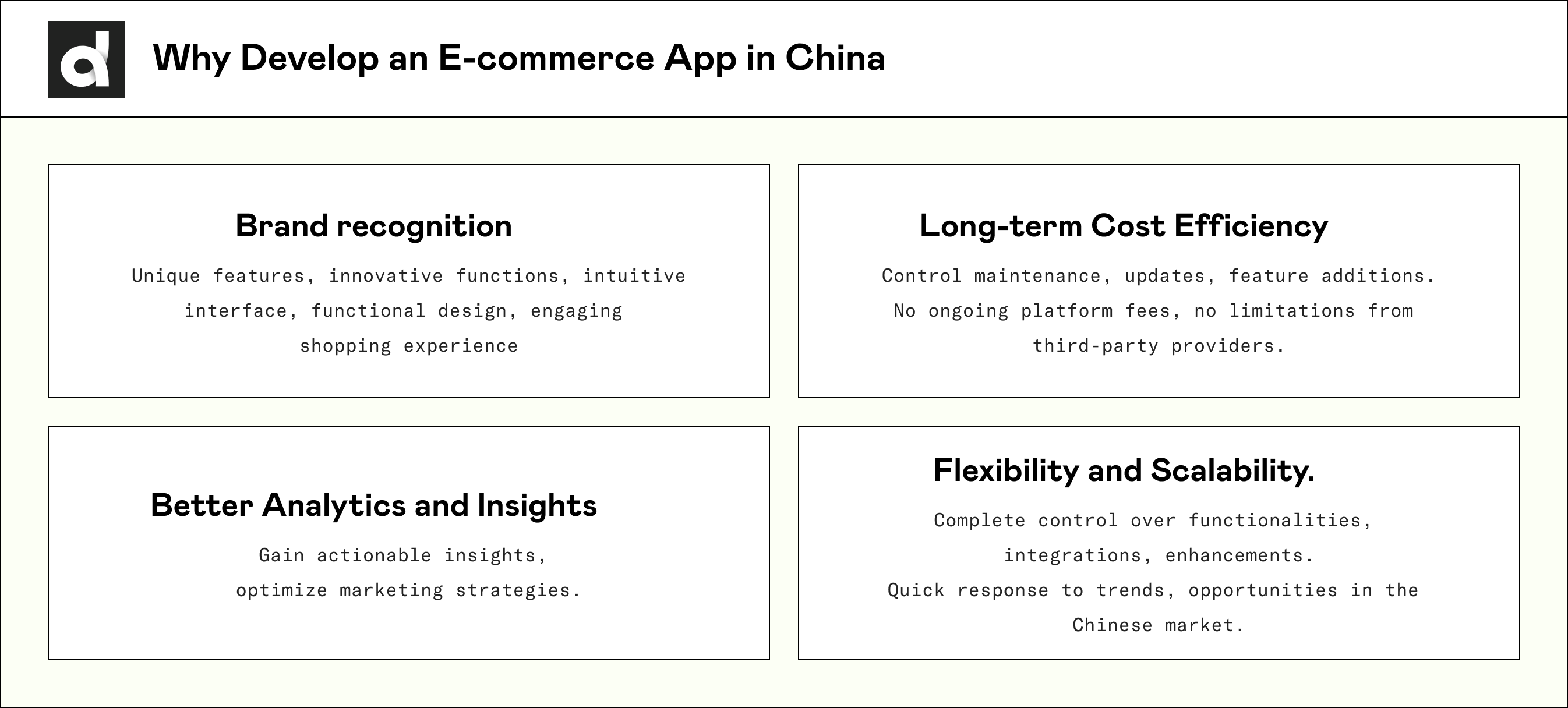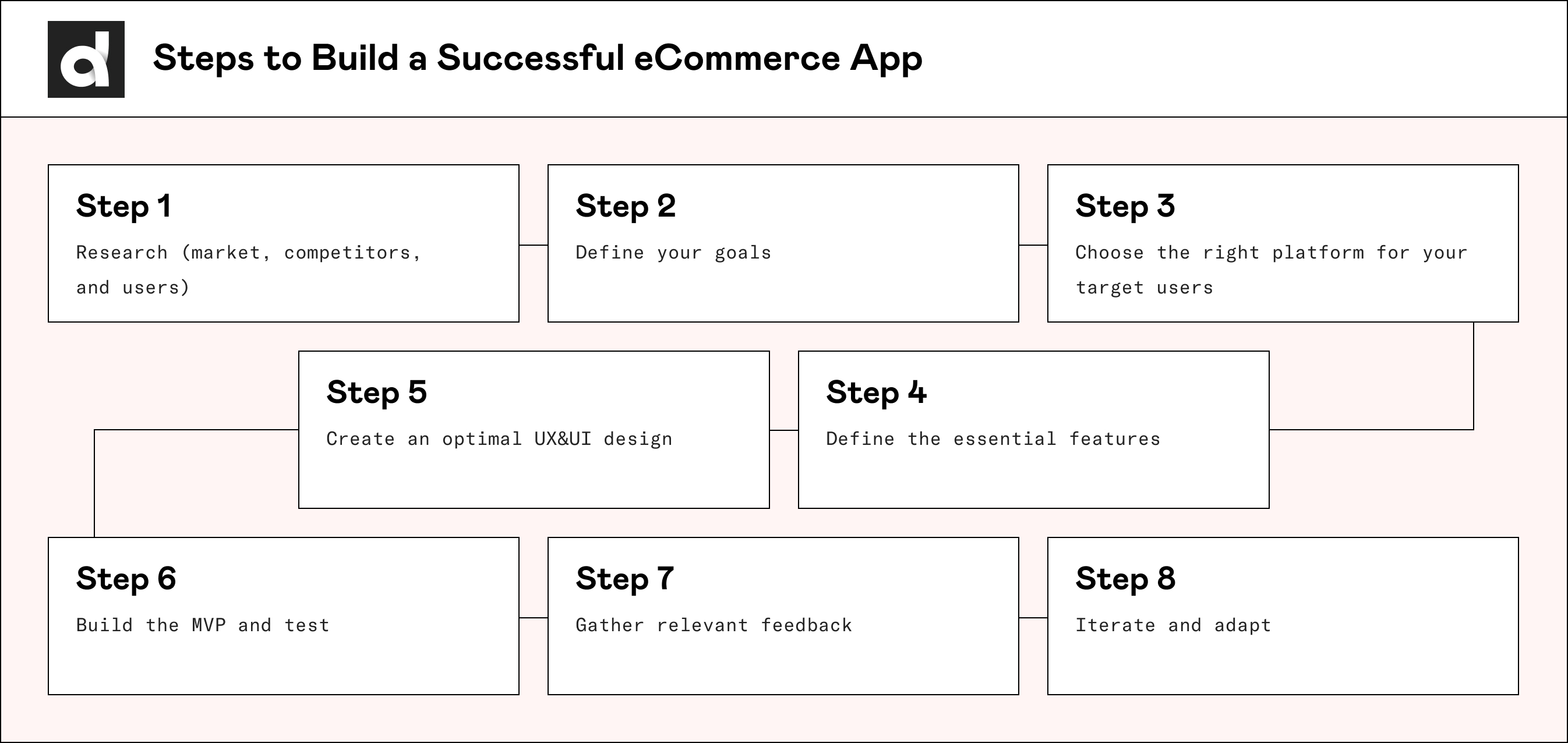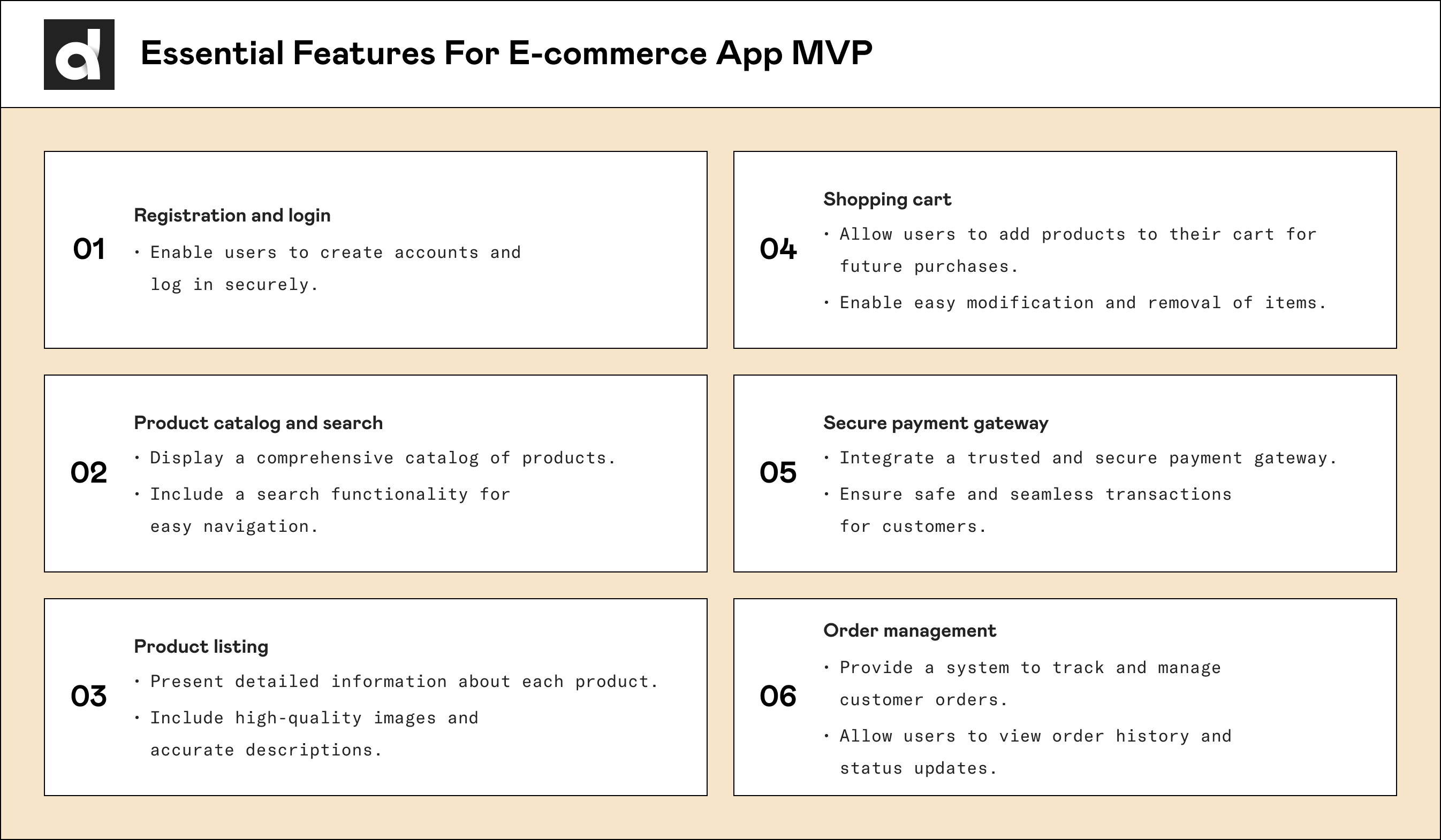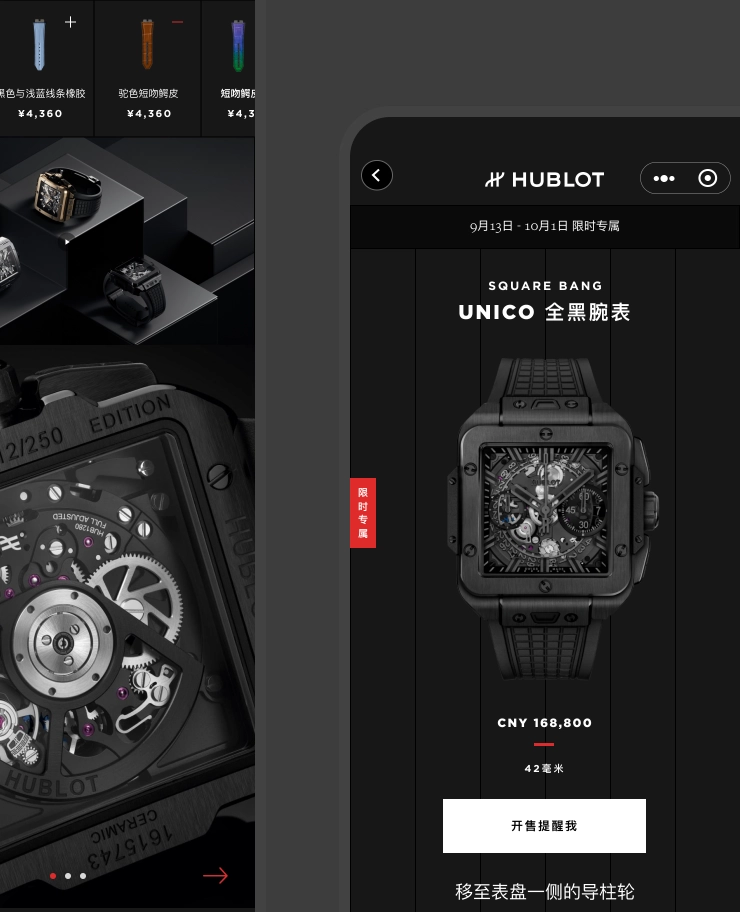A Complete Guide To E-Commerce App Development In China: Steps, Features, Trends
May 24th, 2023 · Written by Samuel Jesse

The rise of ecommerce in China has been nothing short of extraordinary. The emergence of Chinese ecommerce can be traced back to the early 1990s when the first online stores started to appear. However, it wasn’t until the late 1990s and early 2000s that ecommerce truly gained momentum in China, benefiting from the widespread adoption of the Internet.
The growing number of internet users and the rising affluence of consumers played pivotal roles in the rapid expansion of electronic commerce. This development was further reinforced in 2004 with the adoption of The Electronic Signature Law of the People’s Republic of China, solidifying the undeniable potential for the continued growth of the Chinese ecommerce market.
Today, China is one of the largest ecommerce markets in the world, generating almost 50 % of all global transactions. The number of users is expected to amount to 1.33bn by 2027, according to Statista’s digital market insights report.
Such exponential growth can be attributed to several key factors driving the Chinese ecommerce landscape.
-
Mobile commerce has experienced a remarkable surge in popularity, with an impressive 99.8% mobile internet penetration in China. The continued growth of the middle class and widespread usage of smartphones for online shopping has revolutionized how consumers engage with ecommerce platforms.
-
Digital payment services have become pervasive in China, offering a convenient and secure payment method for online purchases. This has further fueled the ecommerce boom, simplifying transactions and enhancing the overall user experience.
-
Government support. Through policies such as tax breaks for online businesses and investments in infrastructure, the government has created a favorable environment for ecommerce to flourish.
-
Cross-border ecommerce has gained significant traction in China as consumers increasingly embrace purchasing products from international retailers. This trend presents ample opportunities for businesses, both domestic and international, to tap into the vast Chinese market.
In this guide, we will navigate the complexities of ecommerce app development in China, offering valuable insights on the necessary steps to establish a successful presence in this dynamic marketplace. We will uncover the essential features that need to be integrated into ecommerce apps to meet the evolving expectations of Chinese consumers.
By comprehensively understanding the Chinese ecommerce landscape, businesses can position themselves for success in this thriving market. So, let's dive in and explore the world of ecommerce app development in China, unlocking its vast potential for growth and innovation.
Surviving The Cut-Throat Ecommerce Market In China: What You Need To Know
China offers immense opportunities but demands strategic adaptations for success. The current Chinese ecommerce market presents unique challenges requiring a deep understanding of localization, a nuanced grasp of the Chinese customer base, and navigating other market-specific factors. Let’s look at these in more detail:
1. Localization:
To resonate with Chinese consumers and build trust, it is essential to localize your ecommerce app by adapting language, design, payment systems, and customer support specifically for the Chinese market.
Ensuring accurate translation and localization of your ecommerce app's content is crucial to effectively communicating with local customers. Understanding and respecting Chinese cultural norms and customs is important for building trust and connecting with your target audience.
2. Understanding the competition:
The Chinese ecommerce app market is fiercely competitive, saturated with numerous players competing for a slice of the market share. To succeed in this crowded market, it becomes imperative to differentiate your offerings and present a unique value proposition that captures the attention and loyalty of Chinese consumers. Standing out amidst this abundance of ecommerce platforms requires innovative strategies and a deep understanding of the market dynamics.
3. Understanding the customer base:
Chinese consumers exhibit unique preferences and behaviors in online shopping. They prioritize social proof, personalized experiences, and seamless mobile integration. To establish trust and credibility with Chinese customers, it is crucial to comprehend their needs and preferences. Successfully catering to these preferences may necessitate customized data collection and analysis and a tailored strategy for customer relationship management and digital clienteling.
4. Keeping up to date with ecommerce market trends:
The Chinese ecommerce market trends are constantly changing, and businesses need to adapt quickly to market changes. This can be challenging, requiring businesses to continually monitor the market and iterate their business model as needed.
5. Understanding the regulatory requirements:
Navigating the Chinese regulatory environment can be challenging for businesses, requiring careful attention to compliance with various regulations. China has specific regulations and policies governing ecommerce operations, encompassing data privacy, intellectual property, and cross-border trade. Businesses must adhere to these regulations and maintain compliance to prevent potential legal complications that could adversely affect their operations.
6. Understanding payment systems and preferences:
In China, popular payment platforms like Alipay and WeChat Pay hold significant market share and are widely used by consumers for online transactions. Integrating these payment systems into your app is crucial to provide a seamless and familiar payment experience that aligns with the preferences of Chinese customers.
What Is So Special About The E-commerce Apps That Made It In The Chinese Market
Several successful ecommerce apps in China have significantly impacted the market. Each has unique characteristics that target their customers and make them stand out. However, there are several features that they all have in common:
-
Mobile-first approach: China has a mobile-centric culture, with a significant portion of the population relying heavily on smartphones for various activities, including online shopping. Ecommerce apps that offer seamless mobile experiences, intuitive interfaces, and fast loading times resonate well with local consumers.
-
Gamification and Interactive Features: Ecommerce apps in China often incorporate gamification elements and interactive features to enhance user engagement and create a more immersive shopping experience. The ‘Live Card’ feature, widely used by Tmall, is a great example. Other popular interactive features include quizzes, augmented reality (AR) try-on, virtual showrooms, and personalized recommendations based on user behavior.
-
Integration of Social Commerce: Successful apps in China have integrated social media platforms, such as WeChat and Douyin, into their ecosystem, allowing users to share products, recommendations, and reviews with their social network.
-
Efficient customer service and fast delivery: Chinese consumers expect impeccable customer service and fast delivery. Ecommerce apps that have established efficient logistics networks, partnered with reputable delivery providers, and offer options like same-day or next-day delivery gain a competitive edge in the market.
Reasons To Develop A Custom E-commerce App
The Chinese ecommerce market is enormous and will only grow larger. Developing an ecommerce app can bring numerous benefits and advantages for businesses, regardless of the industry or size. If you need more reasons to build an ecommerce app in China, here are 4 reasons that might convince you:

1. Brand Recognition
Developing a custom app allows you to stand out in a highly competitive Chinese market. You can differentiate your brand by offering unique localized features, innovative functionalities, an intuitive interface, a functional design, and an engaging shopping journey that resonates with your target audience and sets you apart from other ecommerce platforms.
2. Long-term Cost Efficiency
While developing a bespoke ecommerce app requires an initial investment, it can lead to long-term cost efficiency compared to relying on third-party platforms. With your own app, you have control over maintenance, updates, and feature additions, eliminating ongoing platform fees and potential limitations imposed by third-party providers.
3. Better Analytics and Insights
With a custom app, you can implement advanced analytics tools and gather detailed data about user behavior, preferences, and purchase patterns. This data-driven approach enables you to gain actionable insights, optimize your marketing strategies, improve customer targeting, and make data-backed decisions to drive business growth in China.
4. Flexibility and Scalability
A custom mobile commerce app provides the flexibility to adapt and scale your business according to changing market and consumer demands. You have complete control over the app's functionalities, integrations, and future enhancements, allowing you to respond quickly to emerging trends and opportunities in the Chinese market.
You can collaborate closely with your development team to integrate custom features, third-party APIs, and advanced analytics tools. Furthermore, you can continue working with the same designers and developers who built your initial app, ensuring a seamless transition and ongoing support, allowing you to future-proof your business.
Dominant Mobile Commerce Trends in China
Earlier this year, we shared our view on ecommerce market trends in China for 2023. But several trends continue to dominate the landscape of ecommerce apps worth mentioning specifically:
-
Personalization - recommending products that the customer is likely to be interested in and offering discounts and promotions tailored to the customer's interests.
-
Advancements in AI, AR, and VR technologies - allow users to visualize and engage with your product in their own shopping environment, providing a fun, immersive shopping experience.
-
Live streaming - showcasing the product, directly engaging in conversations with the customers, and offering discounts and promotions in real-time.
-
Social Commerce - integrating social media features allowing users to interact, share, review, and recommend products directly to their social circle.
-
Convenience - offering quick one-click purchase, same-day delivery, free shipping, etc.
8 Steps To Building Ecommerce App For the Chinese Market
Here’s how to build an ecommerce app in 8 easy steps:

1. Conduct Comprehensive Research
At Digital Creative, we never compromise on quality, and that’s why we put the research stage on top of the app development process. Conducting thorough research on the market, your competitors, and potential users in China will provide valuable insights into the preferences and needs of your target audience, helping you tailor your ecommerce app accordingly. We know how to set up the discovery phase for your needs efficiently.
2. Define Clear Goals
Once you have a solid understanding of the market, define clear goals for your ecommerce app. Having well-defined goals will guide your development process and shape your strategic plan.
-
What is your mobile app’s primary goal (driving sales, generating leads, establishing brand awareness, etc.)
-
What problem does your app solve (what unique features or value proposition will you offer to make you stand out from the competition)
-
Who is your target consumer (demographics, preferences, values, needs, etc.)
-
How do you measure the success of your mobile commerce app (what specific KPIs are important to track - downloads, purchases, average order value, customer retention, etc.)
By answering these questions, you can gain clarity on your ecommerce app goals and ensure they align with your overall business objectives.
3. Choose the Right Platform for Your Target Audience
Selecting the right platform for your ecommerce app is crucial. Monitor development costs and inventory, and choose the suitable CMS, database, and scalable framework for your ecommerce app. These factors directly impact cost, efficiency, and adaptability.
With various options such as iOS, Android, cross-platform, or WeChat, it's important to consider the platform that aligns with your goals and best fits your target users.
There are several factors to consider when choosing the right platform for your ecommerce app in China. Some of the most important ones include:
-
Your target audience: Which platform is most popular with your target audience?
-
Your budget: How much are you willing to spend on development and maintenance?
-
Your resources: Do you have the resources to develop and maintain an app for multiple platforms?
Your choice of platform will define the tech stack needed to create a successful ecommerce app. The tech stack is a toolbox that developers use to build your app; it’s a set of components:
Frontend framework - the interface of the app that the user interacts with directly;
Backend framework - the server-side of the application, where data processing, business logic, and database operations occur.
Development - necessary libraries and interfaces to build the app.
Additional Technologies - various supporting tools and technologies to improve the application's flexibility, performance, and security.
Here is a brief overview of the most popular platforms for ecommerce apps in China:
-
Android: With over 64% of the market share, Android is China's leading mobile operating system. It provides a broad reach and is ideal for businesses targeting a wide audience.
-
iOS: iOS is China's second most popular mobile operating system, with around 35% of the market share. This makes it a good option for businesses that want to target high-end users.
-
WeChat: WeChat is a prevalent social media platform with over 1.2 billion users that also offers an ecommerce platform. This makes it a good option for businesses that want to reach a large audience and offer a variety of features, such as social commerce and live streaming.
-
Cross-platform: Cross-platform development allows you to develop a single app that can be used on multiple platforms. This can help you reach larger audiences, but creating a high-quality cross-platform app can be more challenging and expensive.
We at Digital Creative have helped many businesses to build fast, scalable, and secure mobile commerce apps - our tech stack is rock solid. We can help you choose the development and create a customized solution that delivers results.
4. Define the Essential Features
Now that you have completed your research, gathered expert opinions, understood the needs of your users, and gained a comprehensive understanding of your competitors, it's time to focus on defining a unique set of features for your mobile commerce app that will make it stand out in the market.
This is where we define and prioritize your ecommerce app’s feature set using the most suitable framework.
5. Create an Optimal UX&UI Design
The user experience (UX) and user interface (UI) design of your ecommerce app are important for user satisfaction - another critical step that will make your app stand out. Remember, the design of your app is not just about aesthetics but also about creating a seamless and intuitive user interface that enhances the overall experience.
The design of your ecommerce app sets the stage for the user experience, capturing attention and fostering a sense of trust and professionalism. By carefully crafting the design of your app, you can create a unique visual language that aligns with your brand and resonates with your customers, leaving a positive and memorable impression.
6. Build the MVP and Test It
MVP stands for Minimum Viable Product. An MVP is a basic version of your app with essential functionality, and it is a version of your app with the minimum set of features that allows you to launch and test it in the market.
An MVP aims to validate your idea, gather user feedback, and learn from their experiences. It helps you save time and resources by focusing on essential features during the initial development phase.
7. Gather Relevant Feedback
After launching your MVP ecommerce app version, gathering feedback from your users is crucial. This feedback is vital in enhancing and refining your app to make it more user-friendly and aligned with their needs. This step helps you gain valuable insights into areas of improvement, identify potential bugs or usability issues, and discover new features that your users may desire.
8. Iterate and Adapt
The final step in the process is to continuously iterate and adapt your ecommerce app based on user feedback and changes in the market. This step is not a one-time occurrence but an ongoing process that you'll repeat to stay ahead in the ever-changing Chinese ecommerce landscape and meet the evolving needs of your users.
As you iterate and adapt, you can make strategic updates to your app, such as refining the user interface, adding new functionalities, or optimizing performance.
What Features Are Essential - 6 Chinese E-commerce App MVPs
An MVP, a minimum viable product, should prioritize the essential features that deliver maximum value to your customers and make your app usable. It's important to understand that an MVP doesn't include every element that sets your app apart or solves all customer problems.
Instead, it focuses on the minimum set of features needed to provide value. In other words, if there's a feature that would be nice to have but can be added later, it's better to exclude it from the MVP.
Here are 6 MVP features that every Chinese mobile commerce app needs:

1. Registration and Login
This allows users to create accounts and log in securely. By providing a streamlined registration process, you can encourage users to sign up and personalize their experience on your app.
2. Product Catalog and Search
Your ecommerce app should showcase a comprehensive catalog of products, making it easy for users to browse and discover items of interest. Implementing a search functionality further enhances the user experience, enabling users to quickly find specific products based on keywords, categories, or filters.
3. Product Listing
This includes high-quality images showcasing the product from different angles and accurate descriptions highlighting its features, specifications, and benefits. Ensuring product listings are visually appealing and descriptive will help users make informed purchase decisions.
4. Shopping Cart
Implementing a user-friendly shopping cart allows users to modify quantities, add and remove items, and review the total cost, providing a convenient and flexible shopping experience.
5. Secure Payment Gateway
This feature ensures that users can confidently complete their purchases, knowing that their payment information is protected. Implementing widely recognized payment methods, such as WeChat Pay and/or Alipay, enhances the credibility of your app and instills trust in your customers.
6. Order Management
This feature allows users to track and manage their orders, view order history, and stay updated on the status of their deliveries. Providing order-related notifications and updates ensures that users stay informed about their purchases and fosters a positive customer experience.
It is often beneficial to release a small-scale version of your product first, gather feedback from users, and allow them to provide insights on which features are most valuable. This feedback-driven approach enables you to implement changes and enhancements based on user preferences and needs.
More Things To Keep In Mind When Developing A Mobile E-commerce App
Here are some additional tips for ecommerce app development in China:
- Hire a reputable development team
When it comes to developing an ecommerce app for the Chinese market, hiring an experienced development team is crucial for the success of your project. A dedicated design and development team with experience in the Chinese ecommerce landscape will understand this market's unique challenges and requirements. They will deeply understand the local consumer behavior, cultural nuances, and regulatory landscape, allowing them to develop an app that resonates with Chinese users.
The Digital Creative team ensures that your app is developed correctly and meets your specific requirements. We have the technical expertise to build a high-quality and scalable ecommerce app that delivers the desired functionality and user experience.
- Scale ahead
Ensuring the scalability of your app is crucial to accommodate a growing user base. While it may appear that scalability can be addressed later in the development process, it's important to consider it from the outset of eCommerce mobile app development. By forecasting the potential growth of your app and planning its architecture accordingly, you can build a robust foundation that can easily scale and handle increased user demand. Taking scalability into account early on helps prevent future challenges and ensures a seamless user experience as your app evolves.
- Protect users data
Data security and compliance are paramount for ecommerce apps, as they handle sensitive personal information like delivery addresses, contact details, and payment data. Safeguarding user data and adhering to Chinese laws and regulations is paramount. Implementing robust security measures, such as encryption and secure storage, helps protect user information from unauthorized access. Additionally, complying with relevant data privacy and protection regulations ensures your app respects user privacy rights and avoids legal issues.
- Keep it stable
Ensuring stability and smooth performance is crucial for your ecommerce app's success. Users expect a reliable and well-performing app and are likely to abandon an app that annoys them with glitches and frequent crashes.
-
Conduct Quality Assurance (QA) tests: Thoroughly test your app to identify and fix any bugs, glitches, or performance issues. This includes testing various features, functionalities, and scenarios to ensure a smooth user experience.
-
Gather user feedback: Actively seek feedback from your users to understand their experiences and identify areas for improvement.
-
Release timely updates: Respond promptly to user feedback and identify issues by releasing fixed updates. Regularly releasing updates addresses performance concerns and demonstrates your commitment to providing a reliable and user-friendly app.
How Much Does It Cost To Develop An E-commerce App In China
Determining the cost of developing an ecommerce app in China depends on various factors, and at Digital Creative, we recognize that each business has its own specific needs and requirements. Our pricing is tailored to accommodate these factors, ensuring you receive a custom ecommerce development solution that aligns with your budget and goals.
Factors that influence the cost include the scope of work, the size and scale of your business, the stage of the project, and the specific features and functionalities you require. Considering these factors, we can provide a personalized proposal that suits your unique circumstances.
We understand the importance of delivering high-quality ecommerce solutions while keeping costs reasonable. Our team will work closely with you to assess your requirements, identify the necessary features, and create an app development plan that optimizes resources and ensures a successful outcome.
How Long Does It Take To Create An E-commerce App In China
The development timeline for an ecommerce app in China can vary depending on several factors, including the app's complexity, the required features and functionalities, the size and expertise of the development team, and the overall project scope.
Generally, developing a bespoke ecommerce app involves multiple stages, including ideation, design, development, testing, and deployment. Each step requires time and attention to detail to ensure a high-quality end product.
The development process typically takes several months for a basic ecommerce app with standard features. This timeline includes requirements gathering, UI/UX design, front-end, and back-end development, integration of payment gateways, product catalog setup, testing, and bug fixing.
However, it's important to note that more complex and feature-rich ecommerce apps with advanced functionalities may require a longer development timeline.
If you’d like to receive an accurate estimate of the development timeline for your project, contact us. Our specialists will assess your requirements, create a detailed project plan, and give you a clear understanding of the expected timeframe for your app's development.
Have a project in mind?
Join our newsletter!
Get valuable insights on the latest digital trends, strategies, and developments in China and globally delivered straight to your inbox.

